Dev Watercooler: Das Klassendesign in Battle for Azeroth
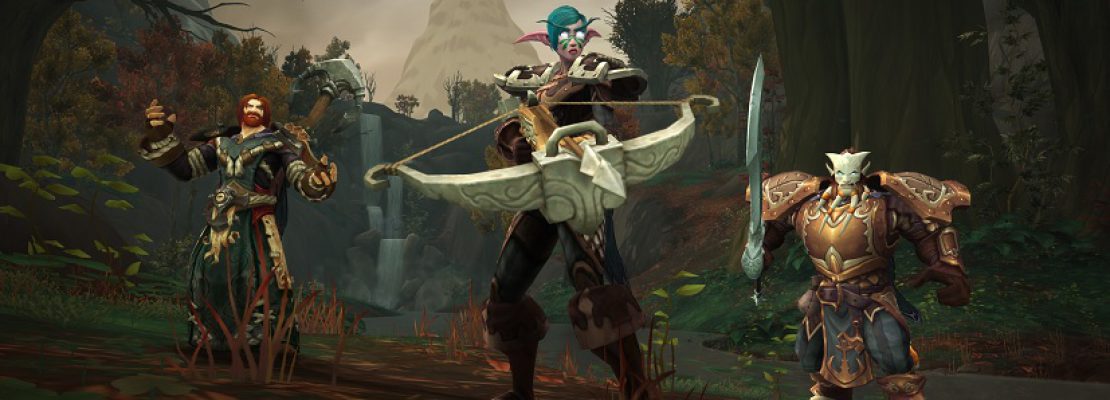
Zur Überraschung ihrer Community veröffentlichten die für World of Warcraft verantwortlichen Game Designer im Verlauf des heutigen Abends nach langer Zeit mal wieder einen neuen Teil ihrer Dev Watercooler-Reihe auf ihrer offiziellen Internetseite, der sich dieses Mal interessanterweise mit dem Klassendesign in der kommenden Erweiterung „Battle for Azeroth“ beschäftigte. Auch wenn die Entwickler in diesem Blogeintrag keine genauen Details zu geplanten Anpassungen an bestimmten Spiezialisierungen erwähnten, so äußerst sie sich in diesem informativen Text aber dennoch zu ihren aktuellen Plänen, ihrer verfolgten Philosophie und ihrer vermutlich das gesamte kommende Addon über angewandten Vorgehensweise. Wer also gerne erfahren möchte, warum die Mitarbeiter von Blizzard Entertainment bestimmte Änderungen durchführen und wie ihre Pläne für das Design der spielbaren Klassen aussehen, der sollte jetzt entweder die folgende Zusammenfassung des englischen Artikels oder den darunter eingebauten Blogeintrag des Entwicklerteams durchlesen.
Zusammenfassung des Artikels:
- In Battle for Azeroth möchten die Entwickler ähnlich wie bei den Patches von Legion vorgehen und basierenden auf dem Feedback der Spieler in Kombination mit ihren gesammelten Daten gezielte Anpassungen an einzelnen Klassen, Fähigkeiten oder Talenten vornehmen.
- Die Entwickler möchte die Einzigartigkeit der verschiedenen Klassen hervorheben, das Zusammenspielen als Gruppe verbessern und weitere Verbesserungen an der Optik bestimmter Spielelemente (Animationen, Effekte etc.) durchführen.
- Während einige Spezialisierungen zum Erfüllen dieser Pläne umfangreiche Anpassungen benötigen, so gibt es aber auch viele Spielweisen, die nur minimal angepasst und überarbeitet werden müssen.
- Die verschiedenen Klassen sollen besonders bei ihren unterstützenden Fähigkeiten ein wenig einzigartiger werden. Bei manchen Klassen kommen komplett neue Fähigkeiten hinzu und einige andere Klassen erhalten in der Vergangenheit entfernte Skills zurück.
- Über mehrere Klassen verteilte unterstützende Fähigkeiten werden vermutlich ein wenig angepasst und möglicherweise sogar generfed. Ein Beispiel dafür wären AoE-Betäubungen.
- Die Schwächen und Stärken der verschiedenen Schadenausteiler sollen stärker hervorgehoben werden. Gleichzeitig möchten die Entwickler die Identität der Heiler und Tanks durch ihre einzigartigen Heilungen und schadensverringernden Effekte verdeutlichen.
- Die grundlegende Funktionsweise des Talentsystems wird sich nicht verändern. Allerdings planen die Designer mehrere Anpassungen an einzelnen Talenten und problematischen Reihen.
- Um die Entfernung der Artefaktwaffe auszugleichen, werden die Entwickler die Ressourcengeneration und die Abklingzeiten einiger Spezialisierungen überarbeiten. Zusätzlich dazu möchten sie einige der durch Artefakte gewährten Fähigkeiten permanent zu bestimmten Klassen hinzufügen.
Developer Watercooler: Battle for Azeroth Class Design Overview
The development of World of Warcraft: Battle for Azeroth is well underway, and we want to share some insights into our philosophies and approach to class design for the expansion. While the launch of Legion brought lots of change to all of Warcraft’s classes, Battle for Azeroth will more closely resemble the example set by Legion’s patch content: targeted iteration based on player feedback and data.
The intro cinematic of Battle for Azeroth revealed at BlizzCon 2017 has an underlying theme that resonates deeply with the class design team: “Remember what makes us strong.” With that in mind, our goals for the next expansion are to promote what makes each class unique, focus on making group gameplay the best that it can be, and continue our efforts to improve combat visuals and effects. While we believe some specializations will need substantial iteration to achieve these goals, others will not, and our target is greater stability across the board.
Class Uniqueness and Utility
One area we’re trying to focus on across all classes is to better emphasize what makes each class unique and provide greater distinction among their various capabilities, especially when it comes to utility—tools that fall outside of core role functions like damage, healing, or mitigation. Part of what makes you feel excitement and pride in your class is pulling off a heroic moment and feeling the appreciation of your group when individually contributing to a shared success. That feeling is eroded when so many classes bring similar abilities, and you feel you’re rarely providing something distinctive. More differentiation in this area will create situations where another class can do something that you can’t, but you will similarly bring tools to the table that your allies lack.
That contrast causes members of a team to be more dependent on each other to succeed, and encourages different group compositions to approach encounters in different ways.
Pursuing this goal will likely involve adding some new abilities (or re-adding previously removed abilities) to give classes a more unique signature where needed. It will also likely involve reining in the availability of certain utility types, especially those that are so widespread that they rarely provide meaningful contrast between classes. As a notable example, Area of Effect (AoE) stuns, some of most powerful utility that exists, are so abundant that most groups have at least one or two. As a result, decision-making around that tool is often less about when it would be best used, and more about avoiding overlap with other AoE stuns. Not only does this sometimes drown out the importance of other crowd control in dungeons, but it means that a class bringing an AoE stun to a group is not the major strategy-defining asset that it should be. Our goal is that whatever powerful kind of utility a class brings, it’s something that group will be happy to have added to their toolbox as they approach a challenge.
The goal of contrast between the abilities of different specializations is not limited to utility. We’re also looking at different specializations’ strengths and weaknesses in their “main role”—damage dealing (or DPS), healing, or tanking—and making sure everyone has something to get excited about and an opportunity to shine. Some DPS specializations are “bursty,” doing fast damage; some live for attrition, wearing away their target. Some specializations prefer to isolate and drill into a single threat, while others revel in blowing up huge packs of monsters. Much of this plays out naturally due to the varying sets of damaging abilities, but we are working more intently than in the past to ensure an appropriate variety and spread of DPS strengths and weaknesses. Likewise, healers and tanks should have a bit more identity through their unique healing and mitigation profiles.
Another part of this approach involves working with our content design teams to collaborate on a world where quests, dungeons, and raids create opportunities for all different types of class strengths to shine. If we’re arming classes with distinct tools that provide powerful answers to different situations, it’s important that the game’s content provides a broad array of challenges that play into those different tools.
Talent System Refinements
The overall talent system will remain largely unchanged, but we will be refining our approach. One of the major challenges in setting up talent rows is that they serve two conflicting desires: choices within a row should be meaningfully varied, but also should not feel like they are simply a test of which is best in a particular setting.
If a row has three similar area-damage talents, your decision can feel like it boils down to a complex math problem. If a row mixes area-damage and single-target talents, you’ll likely feel you should change talents to suit the content you’re doing, which also rarely feels like a choice. The most successful talent rows are those with options that have a generally consistent role in your toolkit, but have very different delivery and mechanics, allowing players to thoughtfully customize their identity and complexity.
One other lesson we’ve already begun implementing in Legion patches is being careful with the effect that talents have on “pacing”—how frequently you get to press your buttons, and how often you generate resources and cooldowns. Of course, many talents affect the pacing of a rotation, and this will continue to be the case, as these are some of the talents with the most noticeable and fun feel to them. But if you have access to multiple talents that slow down or speed up your rotation, players can end up outside the bounds of what feels good to play (for example, by being resource starved or flooded). As we review talents going forward, we will try to avoid this by having strong resource-generating talents compete with each other, and better limiting the pacing change allowable from any single talent.
Artifacts Here and Gone
One particular challenge for the class design team throughout Legion was handling the introduction and eventual removal of Artifacts. The idea was exciting: design a large set of bonuses with the intention that they would be contained within an expansion, allowing us to make them flashier, more complex, and more numerous than we’d been able to in a specialization’s permanent set of core abilities. But the process of parting with Artifacts produces a complex set of decisions about how to adjust the base classes to play well in their absence.
The largest issue is where the pacing of a spec’s rotation was heavily affected by Artifacts. In that case, removing the Artifact may result in a rotation that’s too slow, or has too much open time where the core buttons aren’t available. In the process of reviewing and updating each specialization for Battle for Azeroth, we want to make sure all of them are paced appropriately after the removal of Artifacts. In some cases, we may do things like increase resource generation or reduce cooldowns to fill in some of the newly opened space.
For traits that go beyond simple numerical changes and have their own identity—such as active abilities or the powerful and noticeable procs—we are on the lookout across all specs for a small selection of traits that are worth turning into permanent parts of a class. The bar is high for a trait to become permanent. It’s an intended part of the experience of a system like Artifacts that the bonuses are layered on top of the core functionality of your class. You get to explore those bonuses thoroughly, but eventually move on from them. That leaves space in the permanent classes for new special bonuses from other systems in the future, as we’ll soon be exploring with Azerite Armor. That said, various specs will likely see one or two familiar traits from Artifacts showing up in their talent trees in Battle for Azeroth.
These are the broad philosophies that are guiding our design in Battle for Azeroth, and we were deliberately light on sharing specific examples of change, which are still in a state of flux at this stage. We welcome a community discussion on the principles we’ve outlined, and look forward to delving into detailed and specific changes as we move forward with our beta testing in the near future.


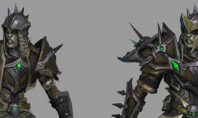

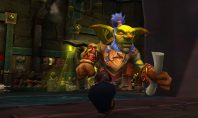
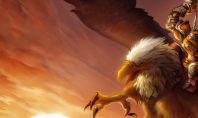







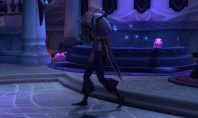







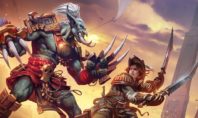

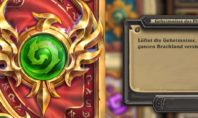
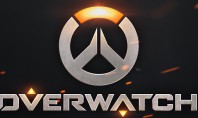


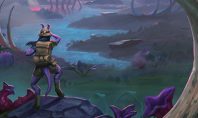

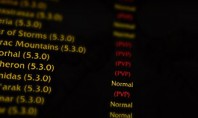










„In Battle for Azeroth möchten die Entwickler ähnlich wie bei den Patches von Legion vorgehen und basierenden auf dem Feedback der Spieler in Kombination mit ihren gesammelten Daten gezielte Anpassungen an einzelnen Klassen, Fähigkeiten oder Talenten vornehmen.“
Das klappt ja auch so gut, kappa. Ist ja nicht so das einige Klassen Monate/Contents lang komplett fürn arsch sind und sie NICHTS dran ändern.
Keine Spezialisierung ist unspielbar. Nur weil eine Spielweise sich nicht auf Platz 1 im Schaden befindet, ist sie noch lange nicht fürn Arsch. Oder hast du konkrekte Beispiele für unspielbare Spezialisierungen? Ich frage, weil ich nicht jede Klasse aktiv spiele.